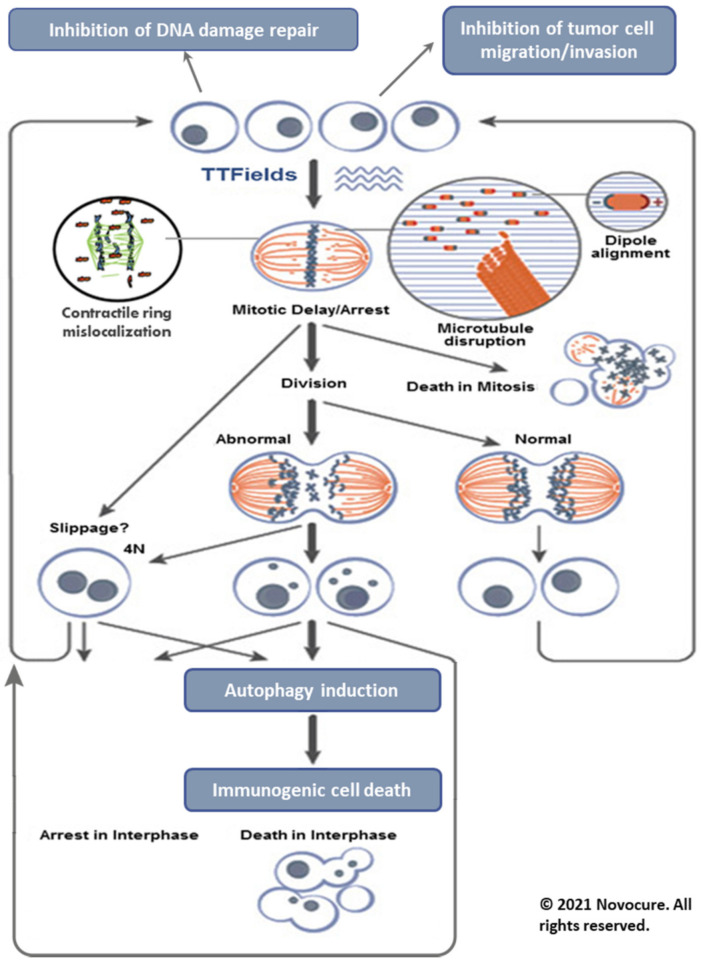TUMOR TREATING FIELDS THERAPY (TTFT)
DR PREM PILLAY, SENIOR NEUROSURGEON, BRAIN TUMOR EXPERT
SINGAPORE BRAIN+SPINE+NERVES CENTER
(Fellow in Neurosurgical Oncology MD Anderson Cancer Center, USA*)
SINGAPORE BRAIN+SPINE+NERVES CENTER
Tumor Treating Fields (TTFields) represent an innovative approach to treating brain cancer, particularly glioblastoma multiforme (GBM), one of the most aggressive forms of brain cancer. This non-invasive treatment modality uses alternating electric fields to disrupt cancer cell division and inhibit tumor growth.
Mechanism of Action
TTFields work by delivering low-intensity, intermediate frequency (200 kHz) alternating electric fields to the tumor region through transducer arrays placed on the patient’s scalp. It is a painless non invasive treatment without any surgery and is best carried out by a Neurosurgical Oncologist.
These electric fields interfere with the mitotic process of cancer cells in several ways:
- Disruption of microtubule formation during mitosis
- Interference with proper chromosome alignment
- Disruption of the mitotic spindle
- Dielectrophoretic movement of polar macromolecules and organelles during cytokinesis
These effects lead to mitotic arrest, abnormal chromosome segregation, and ultimately, cancer cell death
Clinical Application
The TTFields device, known commercially as Optune, was approved by the FDA in 2011 for recurrent GBM and in 2015 for newly diagnosed GBM
The treatment involves the patient wearing a portable device that generates the electric fields. Four transducer arrays are placed on the shaved scalp and connected to a field generator, which the patient carries in a backpack or shoulder bag
Efficacy
The EF-14 phase III clinical trial demonstrated the efficacy of TTFields in newly diagnosed GBM patients. When combined with maintenance temozolomide chemotherapy, TTFields significantly improved both progression-free survival and overall survival compared to temozolomide alone
The median overall survival increased representing a significant improvement in a cancer with historically poor outcomes
Patient Experience and Side Effects
TTFields therapy requires a significant commitment from patients, as the device should be worn for at least 18 hours per day for optimal effect. The main side effect is mild to moderate skin irritation beneath the transducer arrays, which occurs in about half of the patients.
However, compared to traditional cancer treatments, TTFields have a favorable side effect profile, with no systemic side effects reported
Ongoing Research and Future Directions
Current research is exploring the potential of TTFields in other brain cancers and solid tumors. Clinical trials are underway for:
- Low-grade gliomas
- Brain metastases : cancers that spread to the brain from primary sites such as the lung, breast, colon, kidney and other organs
- Meningiomas
- Pancreatic cancer
- Ovarian cancer
- Lung cancer
Researchers are also investigating combinations of TTFields with other treatment modalities, such as immunotherapy and targeted therapies, to potentially enhance their efficacy
Conclusion
Tumor Treating Fields represent a significant advancement in brain cancer treatment, offering a novel approach with proven efficacy and minimal side effects. As research continues, TTFields may become an increasingly important component of brain cancer treatment strategies, potentially extending to other types of cancer as well. The non-invasive nature and favorable side effect profile make it an attractive option for patients who may not tolerate more aggressive treatments. However, challenges remain in terms of patient compliance, cost, and the need for further research to optimize its use. As our understanding of TTFields grows and technology improves, we can expect to see refinements in the application of this therapy and potentially broader adoption across various cancer types. The development and success of TTFields therapy underscores the importance of exploring innovative approaches to cancer treatment, particularly for difficult-to-treat cancers like glioblastoma. It serves as an example of how thinking outside the traditional treatment paradigms can lead to meaningful advances in patient care and outcomes.
For further information and questions please feel free to contact us or WhatsApp us at 65-97255373.
*MD Anderson Cancer Center, USA is the leading Hospital and Center for Cancer in the USA and Globally)

